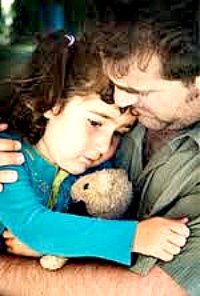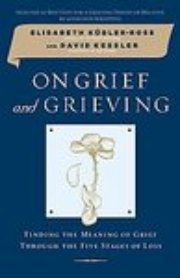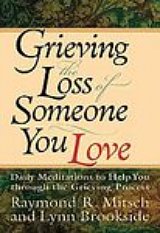|
Grief and Loss
Everyone eventually goes through grief and loss. It may be the death of a loved one. It could be the loss of a job, or a girlfriend, or the loss of the ability to swim or walk or play. The impact depends on how dependent and how closely we rely on that person or thing. This page is to help the reader to understand the feelings that are associated with their grief and the confusion that it can bring. The common feelings associated with grief are: shock, denial, bargaining, sadness, anger, fear, softening and acceptance. I also want to share with you some ideas on how to handle the processing of your grief in a successful manner. Many people try to push aside and forget about their trauma but find that they have never really gotten over the pain of their loss. It keeps haunting them and the pain shows up at the most inopportune time.

Shock is usually the first reaction when we hear the bad news. Shock is the numbing feeling that allows a person to act in auto pilot. There are no feelings just an automatic follow through in what is the expected behavior. Denial is a common coping mechanism which denies that what has happened really did happen. The mind just can not accept the thought. It can not fathom that it is real. It may take the form of continually looking for that person or expecting him/her to show up at any time. Some still hear their loved one’s voice. Some want to text or email them, hoping for a response. Bargaining is a way of second guessing your own actions or words. “If I had only done this or that, they would still be alive today.” “If I had only said the right thing, this would not have happened.” People get stuck in what they could have done to prevent what happened. Sometimes they blame themselves. Sadness is an obvious reaction to loss which can easily lead to depression. If the loss is great, depression at some level is common. Anger and blame is another common reaction. Anger at God, the doctors, the employer, the other driver can dominate your thoughts. There must be someone to blame for our loss.

After three years after losing my wife, I was getting tired of the tears, the pain, the anger, and the depression. I was having a hard time getting to acceptance. It all seemed so unfair. I wanted to do something that I knew I was supposed to do. I needed to forgive her. In my situation, healing could not take place without forgiveness. I prayed about what to do. I looked ahead to what would have been my 20th anniversary with her. She had discarded our wedding picture but I found it and kept it. I needed a physical representation of our marriage and what I needed to do inside. I needed a kind of milestone that would represent the day I forgave her. So on our anniversary, on a hillside, on the property where the whole family once lived, I dug a hole and kindled a fire in the hole. I prayed to God to help me forgive her. I had to accept the idea that our marriage and relationship was over. I had spent seventeen years trying to build up a loving family and a caring relationship with my wife. That dream had to die and I needed to let it go. I placed our wedding picture carefully on the fire. I saw the picture of us turn brown then to black ashes. I saw and heard the sizzle of the frame burning and heard the glass crack into pieces. I watched and prayed as the representation of our love burn up and the smoke rose into the heavens. I gave it up to God. I forgave the best I could. Obviously that day is still etched into my mind. I then buried the burned up picture, glass, frame and all. Jesus tells us that we need to forgive 70 X 7 times someone who has offended us. That has helped me to understand that whenever I think of the offense, I need to forgive over and over and over again. I tell this story because it helps to have a milestone placed in our thinking of what we already have done. I wanted to take back anger for her whenever I thought of what she did to me but the day I burned our picture stands as a reminder of what I did and what I need to continually do. I find that when I forgive, God finds room in my heart to heal me of the hurt and pain I experienced.

Writing letters to our lost loved ones, burning them or sending them up in a balloon is a good way to remember that we are ready to accept the reality of our loss. Be creative. Find a way to memorialize your loved one. At one school I have worked at, a student was memorialized by students making clay pictures with special messages to her. They built a bench around a tree and plastered the clay squares on the bench to always remember her by. A student who had lost her dad to cancer, made a big chart of all the fun and not so fun times she had with her dad. We drew pictures to represent each occasion. She then presented to her class the stories of her dad and the pictures and chart we had made. It was a special healing time for her and her classmates. Do whatever it takes to move you closer to acceptance. Take your time. Do not let anyone rush you. This is your own healing process. |
Books




